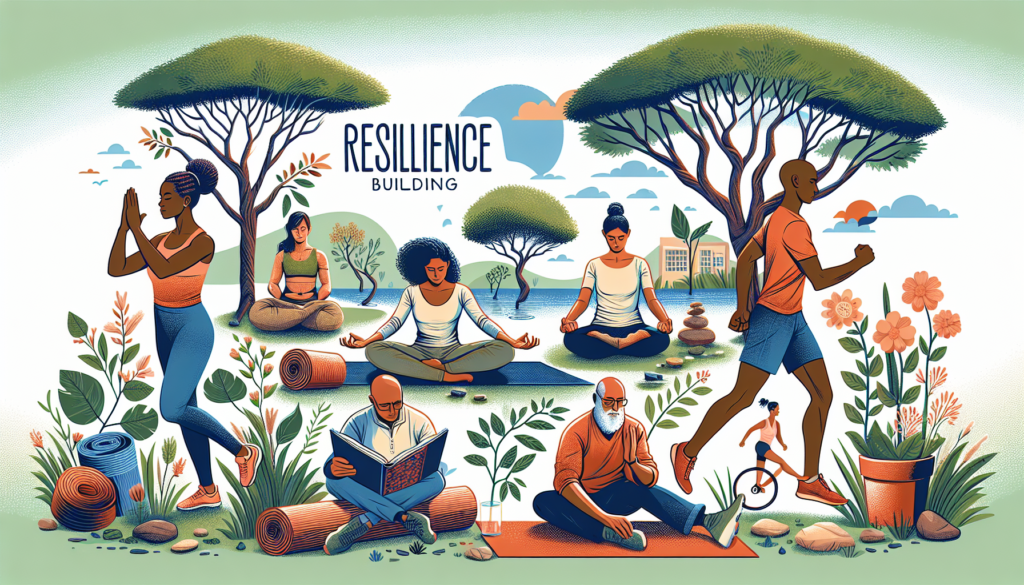Building Confidence Through Exercise: The Ultimate Guide
Welcome to the ultimate guide on confidence building exercises. In a world where self-assurance and belief in oneself are critical for success and well-being, it’s essential to explore techniques and practices that can help boost confidence levels. Whether you’re looking to enhance your professional performance, improve your relationships, or simply feel more comfortable in your own skin, confidence building exercises can be a powerful tool in your arsenal.
Have you ever wondered why some people exude confidence effortlessly while others struggle with self-doubt and insecurity? What role does exercise play in shaping our self-esteem and self-image? These are just a few of the questions we’ll delve into as we uncover the nuances of confidence building exercises and their impact on our lives.
The Psychology of Confidence
Before we dive into specific exercises and techniques, it’s important to understand the psychology behind confidence. Confidence is more than just a feeling or a state of mindit’s a complex interplay of thoughts, emotions, and behaviors. According to psychologists, confidence is closely linked to self-efficacy, which is the belief in one’s ability to succeed in specific situations or accomplish a task.
Research has shown that individuals with high self-efficacy are more likely to set challenging goals, persevere in the face of obstacles, and bounce back from failures. On the other hand, those with low self-efficacy tend to avoid challenges, doubt their abilities, and give up easily when faced with setbacks.
Confidence building exercises are designed to boost self-efficacy by challenging limiting beliefs, changing negative thought patterns, and promoting positive behaviors. By engaging in these exercises regularly, individuals can rewire their brains, build resilience, and cultivate a strong sense of self-assurance.
The Benefits of Confidence Building Exercises
Confidence building exercises offer a wide range of benefits that extend beyond just feeling good about oneself. Here are some of the key advantages of incorporating these exercises into your daily routine:
1. Improved Performance
Confidence is closely linked to performance in various areas of life, including work, sports, and social interactions. By boosting your confidence levels, you can enhance your performance, take on new challenges, and achieve your goals more effectively.
For example, research has shown that athletes who engage in confidence building exercises perform better under pressure, exhibit greater resilience, and have a more positive mindset. Similarly, professionals who exude confidence are more likely to be perceived as competent, trustworthy, and influential in their fields.

2. Enhanced Relationships
Confidence is also a key factor in building and maintaining healthy relationships. When you feel confident in yourself and your abilities, you are more likely to communicate assertively, set boundaries, and express your needs effectively.
Furthermore, confidence building exercises can help you overcome social anxiety, improve your interpersonal skills, and cultivate deeper connections with others. By radiating self-assurance, you can attract like-minded individuals, establish meaningful relationships, and create a supportive network of friends and colleagues.

3. Greater Resilience
Confidence building exercises are not just about feeling good in the momentthey also help build resilience in the face of adversity. When you have a strong sense of self-assurance, you are better equipped to handle setbacks, navigate challenges, and bounce back from failures.
By cultivating a growth mindset and reframing negative experiences as learning opportunities, you can develop the resilience to persevere in the face of obstacles and emerge stronger on the other side. This resilience is a valuable asset that can help you weather the storms of life and emerge more confident and capable than ever before.

Types of Confidence Building Exercises
Now that we’ve explored the benefits of confidence building exercises, let’s take a closer look at some of the most effective techniques for boosting self-assurance:
1. Positive Affirmations
Positive affirmations are powerful statements that can help reprogram your subconscious mind and challenge negative self-talk. By repeating affirmations such as “I am confident,” “I believe in myself,” and “I deserve success,” you can shift your mindset from doubt and fear to courage and confidence.
Research has shown that positive affirmations can help improve self-esteem, reduce stress, and enhance overall well-being. To make the most of this exercise, try incorporating positive affirmations into your daily routine, repeating them aloud or in writing, and focusing on areas where you need a confidence boost.
2. Visualization
Visualization is a powerful technique used by athletes, performers, and professionals to enhance confidence and performance. By vividly imagining yourself succeeding in a specific task or achieving a goal, you can create a mental blueprint for success and boost your self-efficacy.
Studies have shown that visualization can help improve motor skills, increase motivation, and reduce anxiety. To practice visualization, find a quiet space, close your eyes, and create a detailed mental image of yourself achieving your desired outcome. Engage all your senses, emotions, and thoughts to make the visualization as vivid and realistic as possible.
3. Power Posing
Power posing is a technique popularized by social psychologist Amy Cuddy, which involves adopting expansive and confident body postures to boost self-confidence. By striking poses such as the “Wonder Woman” or the “Superman,” you can increase your testosterone levels, reduce cortisol (stress hormone), and project confidence to others.
Studies have shown that power posing can lead to increased feelings of power, dominance, and assertiveness. To practice power posing, stand tall, open up your body, and hold the pose for a few minutes before entering a challenging situation. This simple exercise can help you exude confidence and command respect in any setting.
4. Progressive Exposure
Progressive exposure is a technique used to overcome fears, phobias, and anxieties by gradually exposing yourself to the source of your fear in a controlled and systematic way. By facing your fears head-on and pushing past your comfort zone, you can build confidence, resilience, and self-efficacy.
Whether you’re afraid of public speaking, social situations, or heights, progressive exposure can help desensitize you to the trigger and build your confidence over time. Start by identifying a small, manageable step you can take to confront your fear, and gradually increase the level of exposure as you become more comfortable and confident.
5. Personal Development Activities
Personal development activities such as goal setting, journaling, and self-reflection can also play a significant role in building confidence. By setting clear, achievable goals, tracking your progress, and celebrating your successes, you can boost your self-esteem and motivation.
Journaling can help you gain insight into your thoughts, emotions, and behaviors, identify limiting beliefs, and cultivate a positive mindset. Self-reflection allows you to learn from past experiences, set intentions for the future, and chart a course for personal growth and development.
Expert Opinions
According to Dr. Albert Bandura, a pioneering psychologist known for his work on self-efficacy, confidence building exercises are instrumental in shaping our beliefs, behaviors, and outcomes. Dr. Bandura emphasizes the importance of mastery experiences, vicarious learning, social persuasion, and physiological arousal in building confidence and resilience.
Dr. Amy Cuddy, a renowned social psychologist and TED speaker, has conducted extensive research on the power of body language and posture in shaping our confidence levels. Dr. Cuddy’s work on power posing has inspired millions of people to adopt more confident and assertive body postures to boost their self-esteem and presence.
Conclusion
To wrap things up, confidence building exercises are essential tools for cultivating self-assurance, resilience, and success in various areas of life. By practicing techniques such as positive affirmations, visualization, power posing, progressive exposure, and personal development activities, you can enhance your confidence levels, improve your performance, and achieve your goals with greater ease and conviction.
Remember that confidence is a skill that can be developed and strengthened over time through consistent effort and practice. Whether you’re looking to excel in your career, build stronger relationships, or simply feel more comfortable in your own skin, confidence building exercises can help you unleash your full potential and live a more fulfilling and empowered life.
So, what are you waiting for? Start incorporating these exercises into your daily routine, challenge your limiting beliefs, and step into a more confident and vibrant version of yourself. The journey to self-assurance and success begins with a single steptake that step today and watch yourself soar to new heights!


